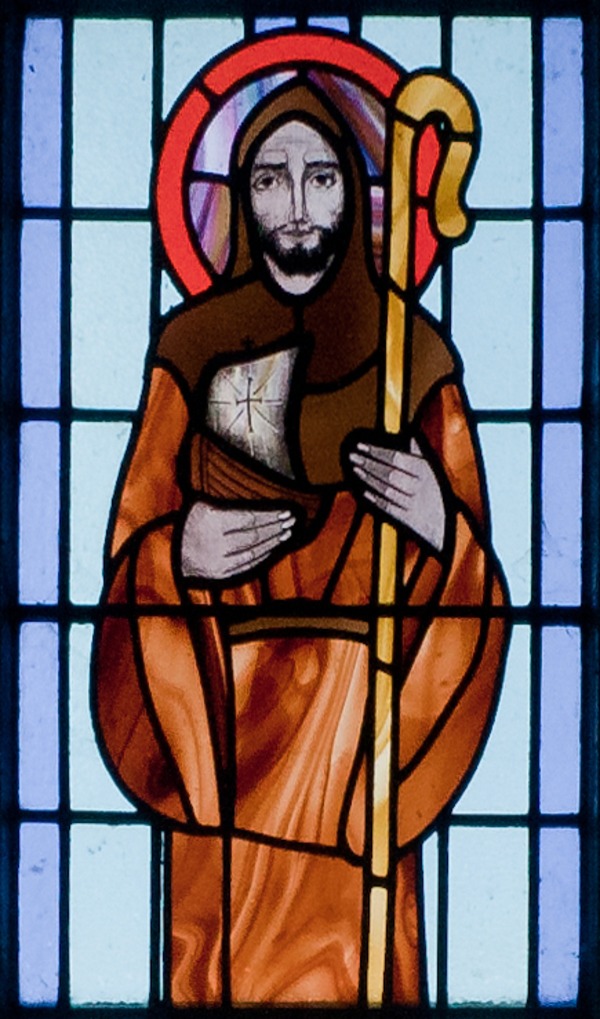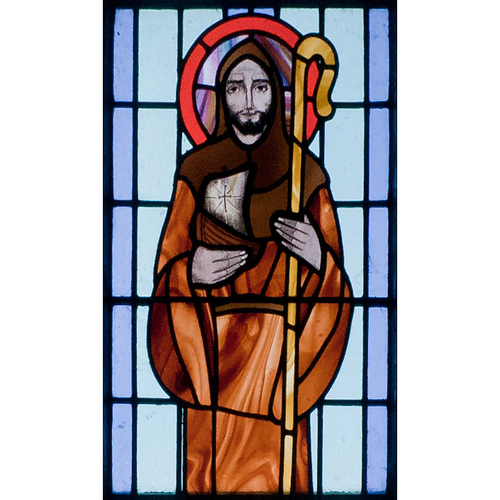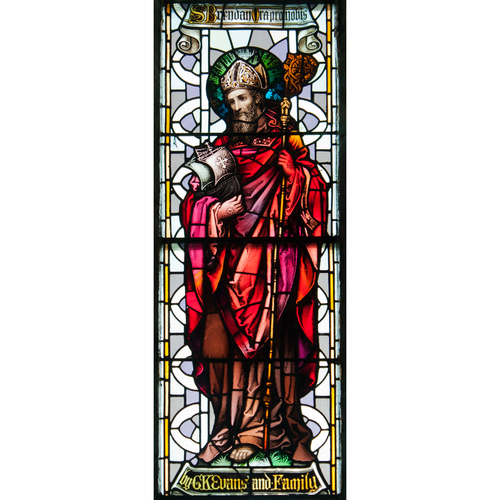
Source: Courtesy of Wikimedia Commons
BRENDAN (Bréanainn), SAINT, Irish abbot and missionary, traditionally connected with voyages westward towards North America and possibly even to present-day Canada; b. c. 484; d. c. 578.
It is believed that he was born near Tralee, County Kerry, Ireland, the son of Christian parents. He was ordained at the age of 26 and later founded the important monastery at Clonfert, County Galway, of which he was abbot. Mt. Brandon, on Dingle peninsula, is named after the saint, and to the west of it is the supposed location of “St. Brendan’s Isle.”
St. Brendan is reputed to have visited such places as the Faeroe Islands, Iceland, Jan Mayen Island, the Antilles, the Azores, the Canaries, and even Greenland and the mainland of America. Although the Irish had reached and even established a religious community in Iceland before A.D. 800, there is nothing to connect Brendan with this venture. Nor is there any reliable evidence to show that either Brendan or any of his countrymen had ever reached Greenland or America. Very early a Vita Sancti Brendani was written and then later a Navigatio which incorporated parts of the Vita and the date of which is disputed (Selmer dates the earliest manuscript at the turn of the 10th to the 11th century). This Navigatio relates the voyage or voyages of the saint in search of the paradisum terrestre (tir tairgirne) or Promised Land of the saints. It was circulated in numerous manuscripts and translated into many languages.
It is a much more reasonable argument that, where the Navigatio Sancti Brendani contains what might be construed as information about the seas or lands west of Iceland, this was derived from accounts of the voyages of the Norsemen in the north Atlantic (or, in cases where Iceland seems to be indicated, from the Irish monks who fled Iceland at the approach of the Norsemen in 870) transmitted by the numerous Scandinavians who visited or settled in Ireland in the years 800–1200.
A close scrutiny of the relevant Icelandic sagas (Saga of Eric the Red, (chap. 12); Eyrbyggja saga (chap. 64); and the Landnámabok (chap. 171)) can lead only to the conclusion that they are inapplicable to any “White Men’s Land” in America, and indeed no land is to be found in six days’ sailing west of Ireland. St. Brendan or others like him may have crossed the Atlantic but there is no real evidence for this view. If they did, they left not even transient memorials, such as one would expect to find described in the Icelandic sagas. Therefore we may assume that the Norsemen did not come into contact with a flourishing Irish colony on the east coast of Canada or of the United States of America.
Navigatio Sancti Brendani abbatis, ed. Carl Selmer (Notre Dame, Ind., 1959) contains a full bibliography and account of the
Cite This Article
T. J. Oleson, “BRENDAN (Bréanainn), SAINT,” in Dictionary of Canadian Biography, vol. 1, University of Toronto/Université Laval, 2003–, accessed December 30, 2025, https://www.biographi.ca/en/bio/brendan_saint_1E.html.
The citation above shows the format for footnotes and endnotes according to the Chicago manual of style (16th edition). Information to be used in other citation formats:
| Permalink: | https://www.biographi.ca/en/bio/brendan_saint_1E.html |
| Author of Article: | T. J. Oleson |
| Title of Article: | BRENDAN (Bréanainn), SAINT |
| Publication Name: | Dictionary of Canadian Biography, vol. 1 |
| Publisher: | University of Toronto/Université Laval |
| Year of publication: | 1966 |
| Year of revision: | 1979 |
| Access Date: | December 30, 2025 |




